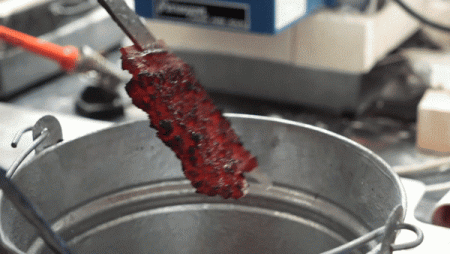April 22, 2018 – The first Earth Day was celebrated in 1970. Forty-eight years later we still pay lip service to the mission which was to infuse in the United States government of the day, a progressive environmental stance. America’s Environmental Protection Agency (EPA) was born out of Earth Day, and today has lost its way under a climate-change denying administration in Washington, DC.
Since Earth Day got started, the United Nations has created World Environment Day, celebrated every June 5th since 1972. But the original Earth Day is acknowledged in many countries including here in Canada, as the first defining moment when the world began to look at our human environmental stewardship and our impact on the planet’s natural processes.
Today we face the challenges that technological innovation has wrought. Carbon dioxide (CO2), one of several greenhouse gases, is a byproduct of our industrial world. Where natural processes have influenced CO2 atmospheric levels in the past, today these carbon sinks no longer have the capacity to absorb all that our chimney stacks and tailpipes spew.
Governments around the world have recognized the need to deal with this rebalancing of planetary carbon because an excess of it in the atmosphere is already impacting life as know it. The Paris Climate Agreement, a non-binding pact signed on to by almost every nation on the planet, set desired not-to-exceed limits for the carbon effect: to keep global mean temperatures from rising no more than 2.0 Celsius by the end of the century, and more desirably, to try and hit the lower target of a 1.5 Celsius rise. So far, there is little in the way of acts of government to suggest that either of these targets can be met. Non-binding doesn’t seem to work.
But private initiatives may do more than all the public gestures about tackling CO2 emissions and wrestling them downward. One of these is the Carbon XPrize. Launched in September of 2015 the Carbon XPrize, a $20 million US challenge, was designed to encourage the development of zero-carbon energy technologies and carbon re-use and recycling solutions. The prize sponsors are NRG Energy, a U.S. retail electricity provider, and COSIA (Canada’s Oil Sands Innovation Alliance), the latter a group of 13 producers responsible for 90% of the output from Alberta’s oil sands operations.
Competition entries were given the task of turning fossil fuels into useful products that captured and reused the carbon to achieve zero-emission end results. The XPrize is focused on two tracks:
- testing technologies to be used in coal-fired power plants converting the CO2 output into valuable products
- testing technologies in natural-gas power plants with the same end result
The highest rated solutions will be rewarded not just for the use of the CO2, but also for products produced with minimal energy, water, land and other intrusions on the natural environment.
The awarding of the $20 million will be delivered in two rounds. Initially, five finalists will each receive $2.5 million having met important milestones based on technical and business viability, and scalability. A grand prize of $7.5 million will go to the overall winner.
Two weeks ago the XPrize announced 10 teams from five countries, chosen from 27 semifinalists, made it to the final round, twice the number originally set at the time of the prize announcement in 2015. Each of the ten received $500,000 of a $5 million milestone prize. Senior Director of Energy and Resources and XPrize lead, Marcius Extavour, stated in an April 9th press release, “These teams are showing us amazing examples of carbon conversion and literally reimagining carbon. The diversity of technologies on display is an inspiring vision of a new carbon economy.”
- Breathe (Bangalore, India) – Led by Dr. Sebastian Peter, the team is producing methanol, a common fuel and petrochemical feedstock, using a novel catalyst.
- C4X (Suzhou, China) – Led by Dr. Wayne Song and Dr. Yuehui Li, the team is producing chemicals and bio-composite foamed plastics.
- Carbon Capture Machine (Aberdeen, Scotland) – Led by Dr. Mohammed Imbabi, the team is producing solid carbonates with applications to building materials.
- CarbonCure (Dartmouth, Canada) – Led by Jennifer Wagner, the team is producing stronger, greener concrete.
- Carbon Upcycling UCLA (Los Angeles, CA, USA) – Led by Dr. Gaurav Sant, the team is producing building materials that absorb CO2 during the production process to replace concrete.
- C2CNT (Ashburn, VA, USA) – Led by Dr. Stuart Licht, the team is producing carbon nanotubes.
- Carbicrete (Montreal, Canada) – Led by Dr. Mehrdad Mahoutian, the team is producing cement-free, carbon-negative concrete that uses waste from steel production as an alternative to traditional cement.
- Carbon Upcycling Technologies (Calgary, Canada) – Led by Apoorv Sinha, the team is producing enhanced graphitic nanoparticles and graphene derivatives with applications in polymers, concrete, epoxies, batteries, and pharmaceuticals.
- CERT (Toronto, Canada) – Led by Dr. Alex Ip of the Sargent Group at the University of Toronto, the team is producing building blocks of industrial chemicals.
- Newlight (Huntington Beach, CA, USA) – Led by Mark Herrema, the team uses biological systems to produce bioplastics.
Each of the 10 finalists demonstrated their technologies as pilot projects and were audited by independent judges who reported to the XPrize leadership. More than just the technology was evaluated including an assessment of the economic value, market opportunity, overall impact on the environment and the CO2 global footprint.
Final testing will be done at two sites, one in Wyoming, a coal-fired power plant, the other in Alberta, a natural gas power plant. To win the teams will have to demonstrate at one or both sites the ability to up the CO2 yield by a factor of ten proving that what they have developed is a technology that can be marketed to the world on an industrial scale.

















